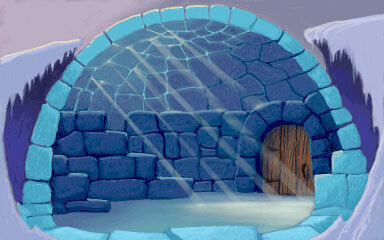UPDATE: In early July 2023, I finished up several painted background screens and the overworld map for “Arzette: The Jewel of Faramore.”
“Arzette: The Jewel of Faramore is a spiritual successor to a pair of infamous fantasy adventure titles (see below), developed by Seedy Eye Software and both funded & published by Limited Run Games, coming 2023 for Steam, Switch, PS4, PS5, and Xbox Series S/X. It is a NEW interactive animated adventure, where players must help Arzette save the Kingdom of Faramore from the evil demon king, Daimur.”
more info here.
BACK TO MY CD-I TALE: In 1991, I was approached by Dale DeSharone, who I’d previously worked with at Spinnaker Software on several CDi titles (“Laser Lords” and “Alice in Wonderland”), to join him in designing scaffolds for two new games that featured several Nintendo characters licensed to Philips Media. We talked about the basic concept of the overworld screens and the general backstory of the games.
Dale and writer Jonathan Merritt had already created detailed treatments that described the main characters, challenges and the worlds that would be in the games. My job was to translate this into visuals that would form a major part of the product.
In “LINK:The Faces of Evil”, the island of Koridai has been taken over by the evil lord Ganon. There were many different areas on Koridai that allowed my imagination to go wild: Nortinka was an icy world with igloos and caves, Hermit Flat, an isolated hermit’s dwelling in the midst of a devastated wasteland, mountainous Lupay where a warren of caves are inhabited by wolf-like creatures and Harlequin Bazaar, a deserted mediaeval market town gives way to menacing pig-like idols. The centerpiece of the ravaged island is Ganon’s Lair which is a mountain carved in the shape of a beast that has evil goat horns and a ravenous owl-like beak.
There would also be sea caves, extensive waterfalls, volcanoes and a shipwrecked Viking boat on a mountain top. There were many sources of inspiration for the map and the subsequent scaffolds. I borrowed ideas from Tibetan, Persian, Indian and Native American design traditions. This can be seen in the exterior design of various structures and the design of the Harlequin Bazaar interiors. We wanted Koridai to be basically Asian in it’s stylistic references but there would be a liberal dose of other cultures to muddy it up a bit. And, of course, the glue that would hopefully hold it all together was my own artistry.
All sketching was done in hard pencils on copy paper and went through several stages of refinement before being scanned and opened up in Painter and Photoshop for digital painting. File sizes were 384 x 240 pixels for a single screen scaffold and were rendered at 72 dpi for on-screen display only. Background painting continued into 1993 for both Nintendo/Philips games. Thom Curry was hired to paint the ZELDA backgrounds. I really love these paintings and consider them some of my finest illustrations even though they are very different from my current work.


































